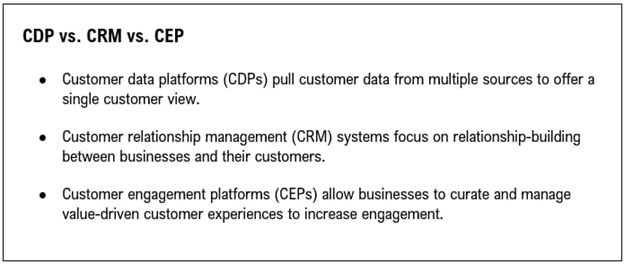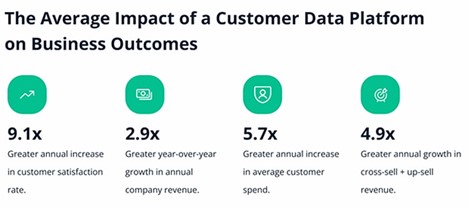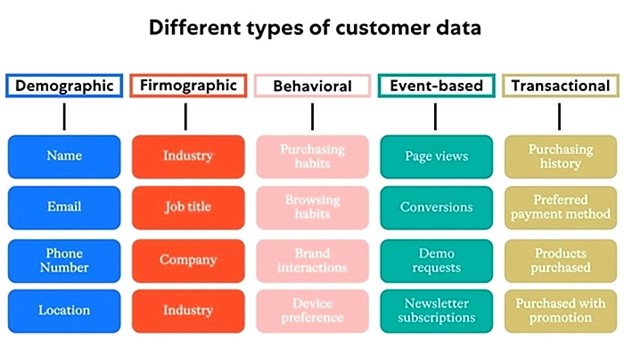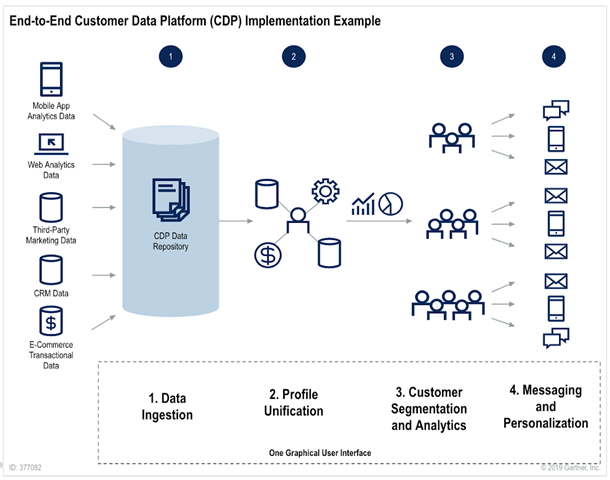Consider the last time you wanted to purchase a messaging app for your organization. You may have explored industry-specific websites, read whitepapers, compared product features, evaluated pricing and reviews, and even sought recommendations from colleagues or industry experts.
After narrowing down your options, you visited various vendor websites, assessing their features, value-added services, pricing structures, and customer support. You may have engaged with chatbots or sales representatives, or requested demos to gain an in-depth understanding of the product or service.
Throughout that journey, you likely encountered targeted advertising from vendors, received personalized emails highlighting relevant solutions, and experienced seamless continuity when revisiting vendor websites.
Such tailored experiences prompt curiosity about how businesses orchestrate personalized B2B shopping journeys, using digital channels to cater to specific customer needs and create a seamless purchasing process.
It's all in the customer data platform!
What Is a Customer Data Platform?

Source: element61
A customer data platform (CDP) is a software solution that compiles first-party data from multiple sources: communication channels, tools/platforms, systems, and data streams. The resulting central database offers a 360-degree view of customers, enabling deep personalization.

Understanding Customer Data Platforms: How They Work
The functions of a CDP can be broken down into four main tasks:
- Data collection. The CDP is a hub for all customer data. It collects, manages, and organizes customer data from all possible sources inside and outside the organization.
- Data harmonization. After collecting all customer data, the CDP performs customer resolution: It links anonymized data of leads with the confirmed identity of known customers.
- Data activation. Once the CDP unifies detailed customer profiles, the information becomes accessible to all teams, employees, or technology platforms, which ensures that everyone is working with consistent data.
- Insight extraction. A CDP allows businesses to trace the entire customer journey by consolidating all the information. Such visualization helps organizations gain insights, such as buyer personas or customer segments, to improve business processes.
A CDP is, therefore, the backbone of a seamless and personalized customer journey.
Why Should Businesses Use a Customer Data Platform?

A CDP can be instrumental in building customer-focused experiences. Here's why businesses should care.
1. It captures first-party data
A CDP captures top-tier first-party data for understanding customers and their expectations. That first-party data can drive crucial business decisions to help your company flourish.
2. It unifies customer data

Source: Ortto
Customer data handling has two components. The first is data collection, discussed previously. The second is data sharing. A CDP centralizes customer data and makes it available to all stakeholders regardless of their team or department, who can then use customer data to improve business processes.
3. It breaks through organizational silos
Data silos form when teams or departments cannot transmit or disseminate customer data. Such a capping of data resources within select segments can cost your company revenue. A CDP breaks through those silos by centralizing the customer data repository.
4. It boosts business operations
Data is the primary source of business intelligence. A CDP democratizes data, allowing teams and departments to extract meaningful, high-impact insights. They can then apply that knowledge to implement new strategies or fine-tune current ones for performance enhancement.
5. It ensures data protection and privacy
There is a growing consciousness surrounding data protection and privacy. Distributed customer data can be difficult to protect from cyber threats and malicious entities. By centralizing all customer data, a CDP eliminates loose ends and makes it easier to safeguard customer data.
How to Choose the Right CDP for Your Business
1. Obtain stakeholder buy-in
Before you propose investing in a CDP, you will need Marketing, Sales, Customer Success, and IT support.
Start by understanding how different teams work with data and the problems they experience. Identify how a CDP can intervene to eliminate or minimize those pain points.
2. Outline use cases
While pitching a CDP to solve various data-related problems, you'll encounter various use cases. It can help with data hygiene, personalizing customer journeys, understanding customers, and creating an ideal customer profile.

Source: Gartner, via Big Data Vietnam
Knowing specific use cases can help businesses select and use an appropriate CDP efficiently.
3. Audit your tech stack
Your CDP is not going to operate in a vacuum. You will be plugging it into CRM platforms, payment gateways, marketing automation tools, help desks, contact centers, etc. So, take stock of and list all the tools and systems that will work with the CDP.
Knowing those requirements beforehand will make it easier to shortlist the CDP that supports the necessary integrations. Weed out any CDP that is incompatible with the tools and platforms that your teams use.
4. Identify key features
Identify the key features and functionalities that your CDP should have. Some recommendations:
- Identity resolution: This feature creates an individualized profile as customers switch between various channels, touchpoints, and devices.
- Data integrations: The CDP should be integrable with your current tech stack to ingest and activate customer data.
- Custom segmentation: This feature allows you to curate custom audience segments for effective customer journey personalization.
- Privacy and security: It should carry GDPR or ISO-grade certifications that indicate compliance with the highest data privacy and security standards.
- Advanced analytics: CDPs with advanced analytics capabilities can present business intelligence in visual and easy-to-digest formats for faster decision-making.
Tweak your list as you would with the CDP use cases.
5. Assess vendors
Websites such as G2, Capterra, Clutch, and GetApp offer relatively unbiased, firsthand customer reviews for software solutions.
Consider signing up for product demos and trials to experience each CDP to see whether it meets your expectations.
Thoroughly vet the vendors before you commit to any one of them.
* * *
A CDP is more than just a fancy piece of software to centralize customer data. It ensures data relevance and recency, which enriches business intelligence. It also includes fringe benefits, such as improved data security, smoother business operations, and greater data accessibility.
Once you obtain the right CDP, you'll get a better understanding of your customers, and you will be able to offer personalized experiences throughout the buying process.
More Resources on Martech and Choosing a CDP
CDPs, DMPs, CRMs... Oh My! Which Data Solution Is Right for You? (A Guide for Marketers)




